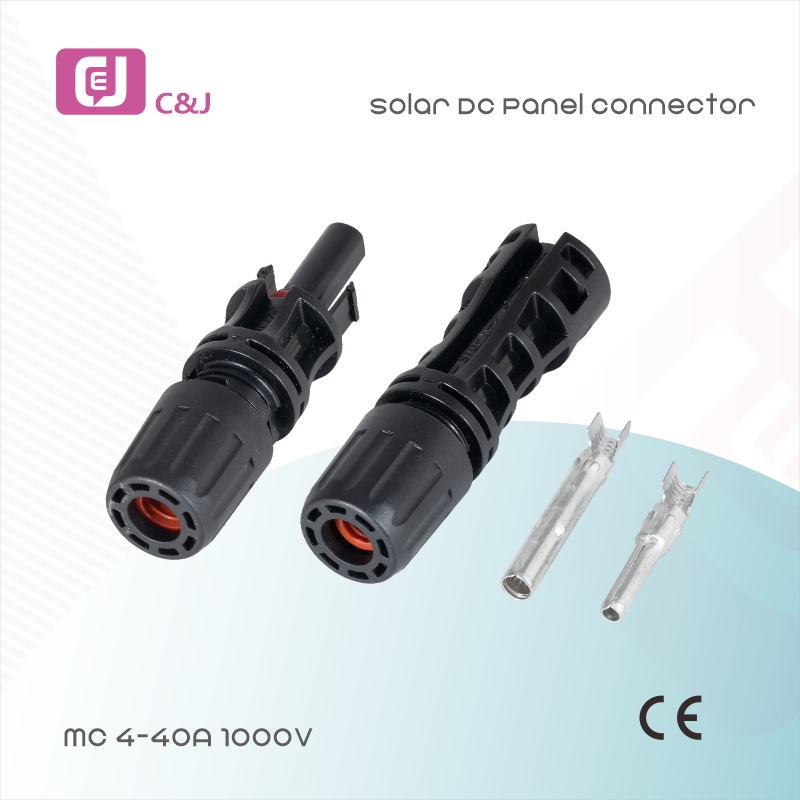Made In China MC4-40A DC1000V 2.5mm²-6.0mm² Female and Male Solar Panel Cable Connectors
Features
- Simple assembly, easy to use
- Suitable for different sizes of PV cable
- Waterproof grade: IP67
- Housing made of PPO material, anti-UV
- High current carrying capacity
- Contact material: Copper Tin Plated
- High heat resistance, wear-resisting
Technical Data
| Item | MC4 cable connector |
| Rated current | 30A(1.5-10mm²) |
| Rated voltage | 1000v DC |
| Test voltage | 6000V(50Hz, 1min) |
| Contact resistance of plug connector | 1mΩ |
| Contact material | Copper, Tin-plated |
| Insulation material | PPO |
| Degree of protection | IP67 |
| Suitable cable | 2.5mm², 4mm², 6mm² |
| Insertion force/withdrawal force | ≤50N/≥50N |
| Connecting system | Crimp connection |
Material
| Contact material | Copper Alloy,tin plated |
| Insulation material | PC/PV |
| Ambient temperature range | -40°C-+90°C(IEC) |
| Upper limiting temperature | +105°C(IEC) |
| Degree of protection(mated) | IP67 |
| Degree of protection(unmated) | IP2X |
| Contact resistance of plug connectors | 0.5mΩ |
| Locking system | Snap-in |
Solar DC Panel Connector
When setting up a solar panel system, one of the most important components is the connectors that connect the panels together. There are two main types of connectors used in solar panel installations: female and male solar panel cable connectors.
Solar panel female cable connectors are designed to accommodate male connectors and create a secure and weather-resistant connection. These connectors are typically used on one side of a solar panel installation and are critical to ensuring that the power produced by the panel is efficiently transferred to the rest of the system.
Male solar panel cable connectors, on the other hand, are designed to plug into female connectors and create a safe and secure connection. These connectors are typically used on the wiring and inverter sides of the installation to allow smooth transfer of power from the panel to the rest of the system.
In addition to their specific roles in solar panel systems, female and male connectors are designed to be durable and weather-resistant. This is critical to ensuring the connector can withstand outdoor elements and continue to operate effectively over time.
When choosing between female and male solar panel cable connectors for a solar panel installation, it is important to choose a connector that is compatible with the specific type of panel and wiring being used. Ensuring compatibility will help prevent any connection issues and ensure your system is operating at optimal levels.
Additionally, proper installation procedures must be followed when connecting female and male connectors to minimize the risk of damage and ensure the system operates safely and efficiently.
In conclusion, female and male solar panel cable connectors are important components of any solar panel system. By selecting the correct connector and following proper installation procedures, you can create a safe and reliable connection for efficient power transfer from the panel to the rest of the system.



















